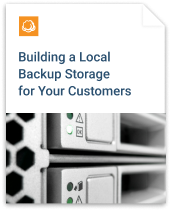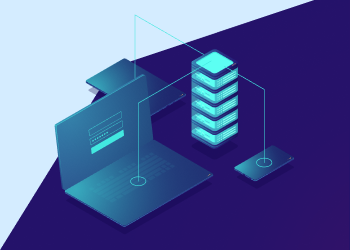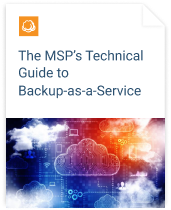With all the cloud VM server options available today -- including Windows Server 2008, 2012 and 2016, as well as a host of Linux flavors -- do you still need an onsite server? This question is constantly being asked across all fields of business.
Table of Contents
The Power of Cloud
With a Virtual Machine (VM) server, you have all the power of a Windows or Linux Server hosted in the cloud. All you need to access the server is an internet connection. These servers can store your files, help you access a cloud-based database and more.
There are three major platforms for these cloud VMs: Azure VM from Microsoft Azure, Amazon EC2 from Amazon AWS and Google CE from Google Cloud Platform. All three of these platforms offer you a server virtualization option, and some feature pay-per-use payment options. All three platforms have different pricing for features, so you will have to calculate pricing on a per-project basis.
In addition to server virtualization, the three major platforms all offer storage, databases and a host of other services for your server infrastructure. All of these services are available to you for a monthly fee. All the services are maintained by the vendor; your company just has to set the service up.
IT personnel will be concerned with the administration of the service, instead of the physical hardware maintenance as an on-prem installation. For example, Windows Azure has full Active Directory support in Azure and can synchronize with your current on-prem servers' Active Directory database.
With the Microsoft Console in Azure, you have full control over your servers, as well as the administration of the servers. The Microsoft platform also features full Office 365 support through a separate console to administer the users as well as to access files.
With a standard on-prem server box, you would need to hire a certified technician and/or certified staff to maintain it. With cloud-based servers, you will be able to hire certified staff for all three major platforms to maintain the good operation of your server. All three platforms also offer certification options for your staff to learn advanced operations.
Research the Best Cloud Server Options
With security breaches making the news practically every month, security may be a concern for most companies in order to keep their trade secrets private. However, many companies in industries with high-security needs, such as financial institutions and some government agencies, are already moving to the cloud. Cloud security risks can be effectively managed.
For the small business owner who has recently bought an expensive server with a service contract, it often doesn't seem worthwhile to go to the cloud due to the money already invested in on-prem infrastructure. If you are ready to upgrade your server, though, maybe it's time to look closer at cloud options.
The advantages of cloud platforms or hybrid platforms are that you need only a reliable internet connection, and you will be spending less for the same service as your on-prem server will give you. All major platforms offer encryption to and from the server and the service is fully scalable as your business grows.
You have to do your research well regarding which platform to use or to continue with on-premises servers. With cloud platforms, you have to figure out a yearly cost of operation. This will involve licensing as well as any application development that needs to be done. Although the entry-level cost of the cloud platforms is low, if you figure out the entire project cost of what you are going to use it for, it might not be worth it.
Hybrid platforms that use some on-premises servers, as well as some cloud-based servers, seem to be the future. To put all your eggs in one basket is never what good business is about. At the same time, the availability and cost savings of cloud servers is a major benefit, which can justify moving all operations to the cloud in some cases.
Cloud VM vs On-Premises
On-Premises Pros
![]() You have full control over your hardware and software.
You have full control over your hardware and software.
![]() Your data is as secure as your premises.
Your data is as secure as your premises.
![]() IT personnel are readily available.
IT personnel are readily available.
On-Premises Cons
![]() Expensive hardware cost and deployment.
Expensive hardware cost and deployment.
![]() Software licensing and development can be costly.
Software licensing and development can be costly.
Cloud-Based Pros
![]() Low startup cost.
Low startup cost.
![]() No hardware expense.
No hardware expense.
![]() All updates are managed by the vendor.
All updates are managed by the vendor.
![]() It can be accessed anywhere on the Internet.
It can be accessed anywhere on the Internet.
Cloud-Based Cons
![]() Have to be aware of the long-term costs.
Have to be aware of the long-term costs.
![]() Beware of outage possibility with the vendor.
Beware of outage possibility with the vendor.
![]() It can be attacked via the Internet.
It can be attacked via the Internet.
Conclusion
Every organization is different, and it's impossible to suggest which type of platform is right for your organization. Each company should do a complete study to decide whether to migrate from on-premises to the cloud -- or, alternatively, to take a hybrid approach.





